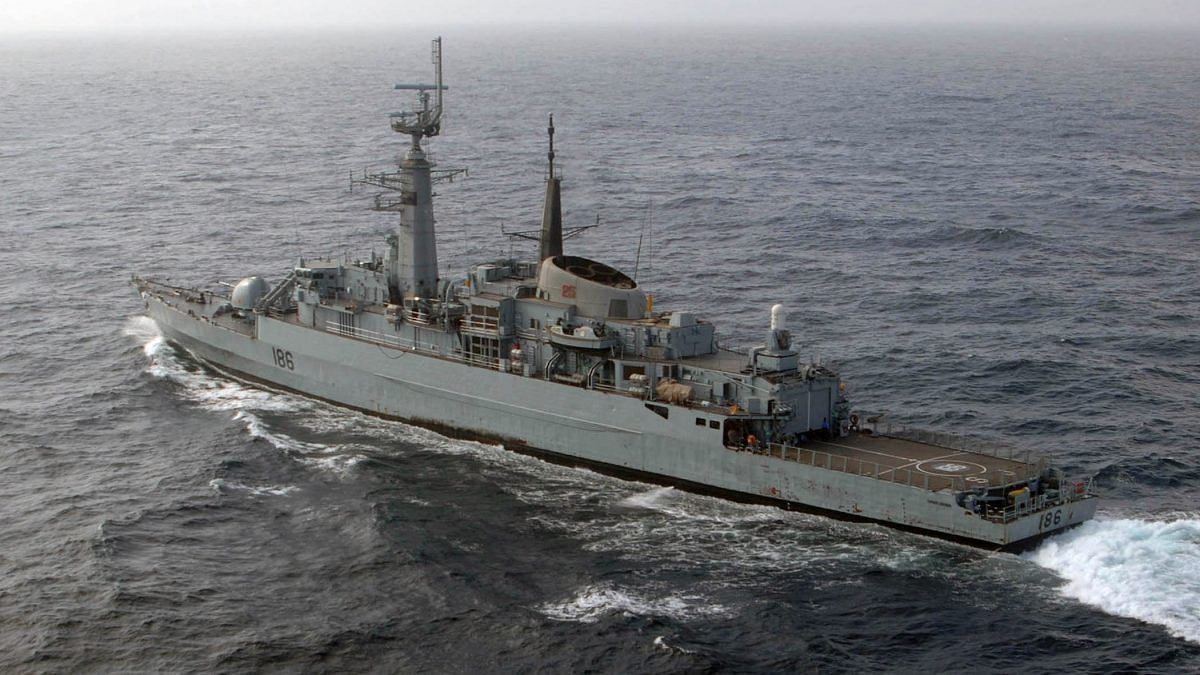The Pakistan Navy has garnered significant attention recently following comments made by India’s Chief of Naval Staff, Admiral Dinesh Tripathi, during a Navy Day press interaction. He highlighted Pakistan’s ambitious goal of expanding its naval fleet to 50 ships over the next decade, a statement that has fueled discussions and speculation about the nature and implications of Pakistan’s ongoing naval modernization efforts.
Pakistan’s strategic enhancements appear to be underscored by a series of acquisitions, including Type 054A/P frigates, Babur-class corvettes, and Hangor-class submarines, positioning the Pakistan Navy for a notable transformation. However, Admiral Tripathi’s critique of prioritizing military investments amid Pakistan’s political and economic crises raises critical questions regarding the underlying rationale for such extensive naval developments.
The backdrop to Pakistan’s naval modernization stems from a history marked by significant anxieties regarding maritime security, particularly in light of India’s expanding influence in the region. The repercussions of Operation Trident in 1971, where Indian missile boats struck Karachi harbor, still resonate within Pakistan’s military strategy. Subsequent confrontations, including India’s naval maneuvers during Operation Talwar in 1999 and Operation Parakram in 2001, alongside the Indian Navy’s show of force with over 60 warships during a crisis in 2019, have consistently emphasized Pakistan’s vulnerabilities in the maritime domain. These events have reinforced the imperative for Pakistan to develop a credible naval deterrent capable of countering Indian dominance.
As the Indian Navy continues to enhance its presence and capabilities, the Pakistan Navy has shifted from a strictly defensive posture to adopting an offensive strategy that seeks to mitigate the asymmetric power dynamics at sea. Recent acquisitions signify this strategic pivot, particularly the commissioning of the Hangor-class submarines equipped with air-independent propulsion systems that amplify their stealth and endurance. Additionally, the successful test of an indigenously produced ship-launched ballistic missile (SLBM) indicates Pakistan’s commitment to solidifying its second-strike nuclear capability at sea, further altering the regional security landscape.
Pakistan’s surface fleet has also seen enhancements with the addition of advanced Type 054A/P frigates and MILGEM-class corvettes, which boast cutting-edge radar systems and multi-role capabilities. These advancements enhance the Navy’s ability to project force and operate effectively in contested waters, while developments in unmanned maritime systems bolster Pakistan’s surveillance and rapid response capacities against perceived threats.
The modernization narrative is further amplified by statements from Pakistan’s naval leadership, including Admiral Naveed Ashraf, who has explicitly criticized India for allegedly destabilizing regional peace and emphasized the need to counteract Indian ambitions in the Indian Ocean Region. Islamabad’s 2022 National Security Policy highlights growing concerns surrounding India’s expanding nuclear capabilities and its implications for regional stability, reflecting a pervasive anxiety within Pakistan’s strategic circles.
Compounding these security concerns is the role of disinformation disseminated by Pakistan’s Inter-Services Public Relations (ISPR), which often paints India as a persistent threat. This narrative serves to justify Pakistan’s naval buildup while engendering a domestic and international perception of India as a maritime hegemon seeking to undermine regional stability.
China’s increasing involvement is a pivotal component of Pakistan’s naval modernization, positioning it as a primary benefactor and strategic partner. Within the last decade, Beijing has supplied crucial military hardware and technology, including the procurement of Hangor-class submarines and Type 054A/P frigates. These advancements not only enhance the capabilities of the Pakistan Navy but also exemplify a mutual interest in leveraging bilateral exercises to counterbalance India’s rising influence.
While the strategic significance of Gwadar remains salient given its role in the China-Pakistan Economic Corridor (CPEC), an observable restraint on militarization reflects a broader effort by China to maintain a balanced approach toward its regional interests. Nevertheless, the modernization of the Pakistan Navy represents an ongoing strategic challenge for India, compelling the Indian Navy to calculate its resource allocation and operational strategies in light of a more assertive Pakistan-China maritime nexus.
In conclusion, the evolving landscape of maritime power in South Asia signals a critical juncture for regional security dynamics, as Pakistan’s naval modernization efforts, propelled by historical anxieties and practical collaborations, continue to shape the strategic calculations of neighboring India.













